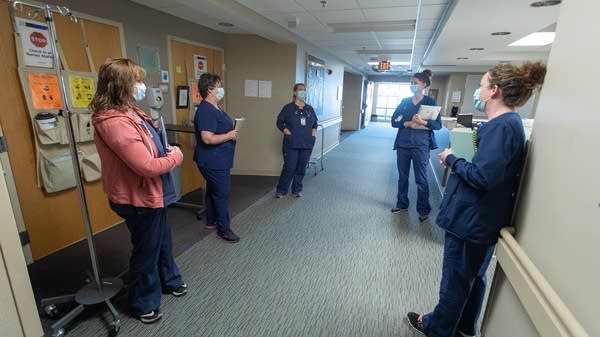July 13 update COVID-19 in MN: As young adult cases jump, spread worries rise

Five nurses from Sanford Medical Center in Bemidji on caring for patients with COVID-19. The staff at the medical center have worked for months to prepare for COVID-19.
Courtesy of Sanford Health
Go Deeper.
Create an account or log in to save stories.
Like this?
Thanks for liking this story! We have added it to a list of your favorite stories.


